Danville, Kentucky and Centre College
Danville, Kentucky is the county seat of Boyle County and lies within the southern fringe of the famous Bluegrass region in the center of the state. Danville’s history is basically Kentucky’s history, for it was in Danville that the birth of Kentucky took place.
In 1776, Kentucky was still frontier and but a county in the western part of Virginia. Daniel Boone led pioneers over what became known as the Wilderness Road which wound from the mountainous Cumberland Gap into the central part of Kentucky.
The prominent location of Danville on the Wilderness Road made it a crossroads for early settlers in the area, and by 1785, the little settlement had become a center for political activity and was chosen as the first seat of government.
A meeting house, courthouse, and jail were built, and over the next 8 years, 10 conventions were held in what became known as Constitution Square.
By 1790, delegates from the county of Kentucky and the government of Virginia reached an agreement by which Kentucky would become an independent state, and on June 1, 1792, Kentucky County became the Commonwealth of Kentucky, and the 15th state.
However, having given birth to the baby didn’t give custody of the child, and the capital of the newly formed Commonwealth was established some 45 miles north, in Frankfort, on the Kentucky River. Danville’s growth, slow but steady throughout the next century plus, never allowed it to become more than a small, beautiful, genteel, Kentucky county seat, full of substantial Federal, Greek Revival, Antebellum, and later, Victorian homes, and a trading center, surrounded by gently rolling, lush farmland punctuated by limestone fences.
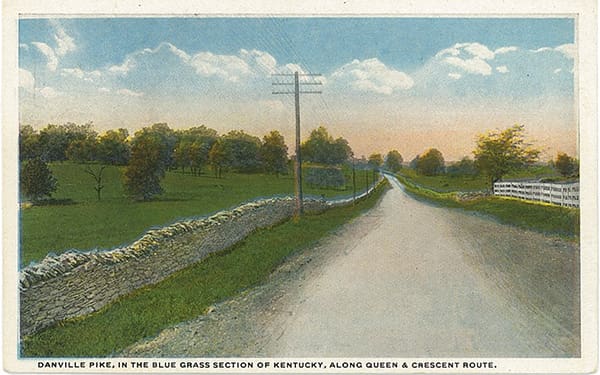
Pike into Danville

Danville's scenic Lexington Avenue has changed very little since this view at at the turn of the 20th century.

Downtown Danville early in the 20th Century
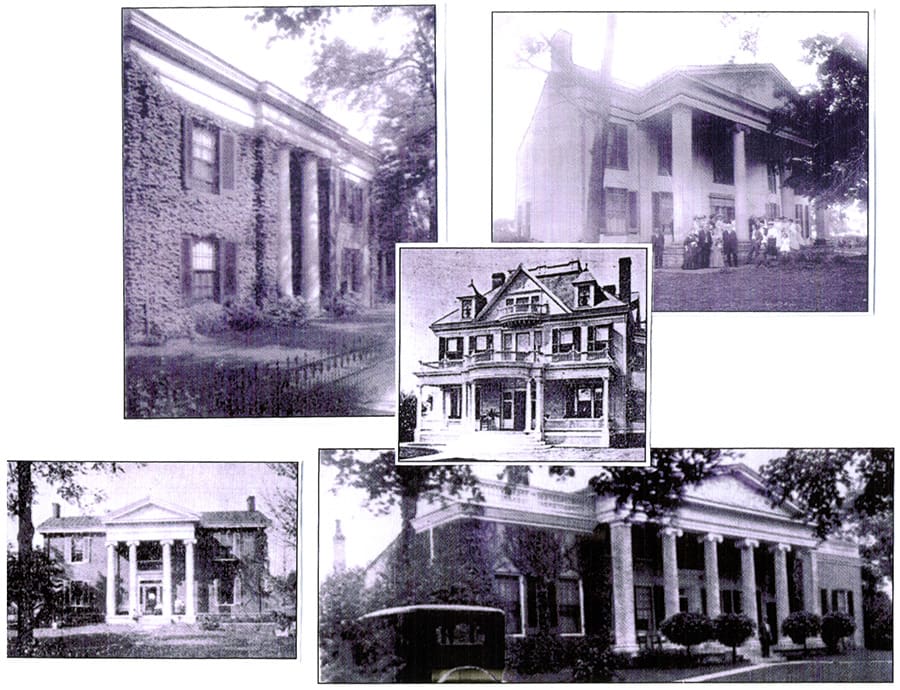
Homes in the very sophisticated little college town
In 1784, the mainly Presbyterian Scots-Irish settlers built the first place of worship in Danville. These same Presbyterians and their descendants were instrumental in establishing Centre College in 1819, using the Old English spelling when acknowledging Danville's central location in the state.
The initial class was comprised of 5 students. The faculty numbered 2. The classes followed the classical curriculum of Greek, Latin, Logic and Rhetoric.
For the next 10 years, Centre grew slowly, but in the period between 1830 and just before the Civil War, the college began to develop into a respected institution of higher learning.

Antebellum years
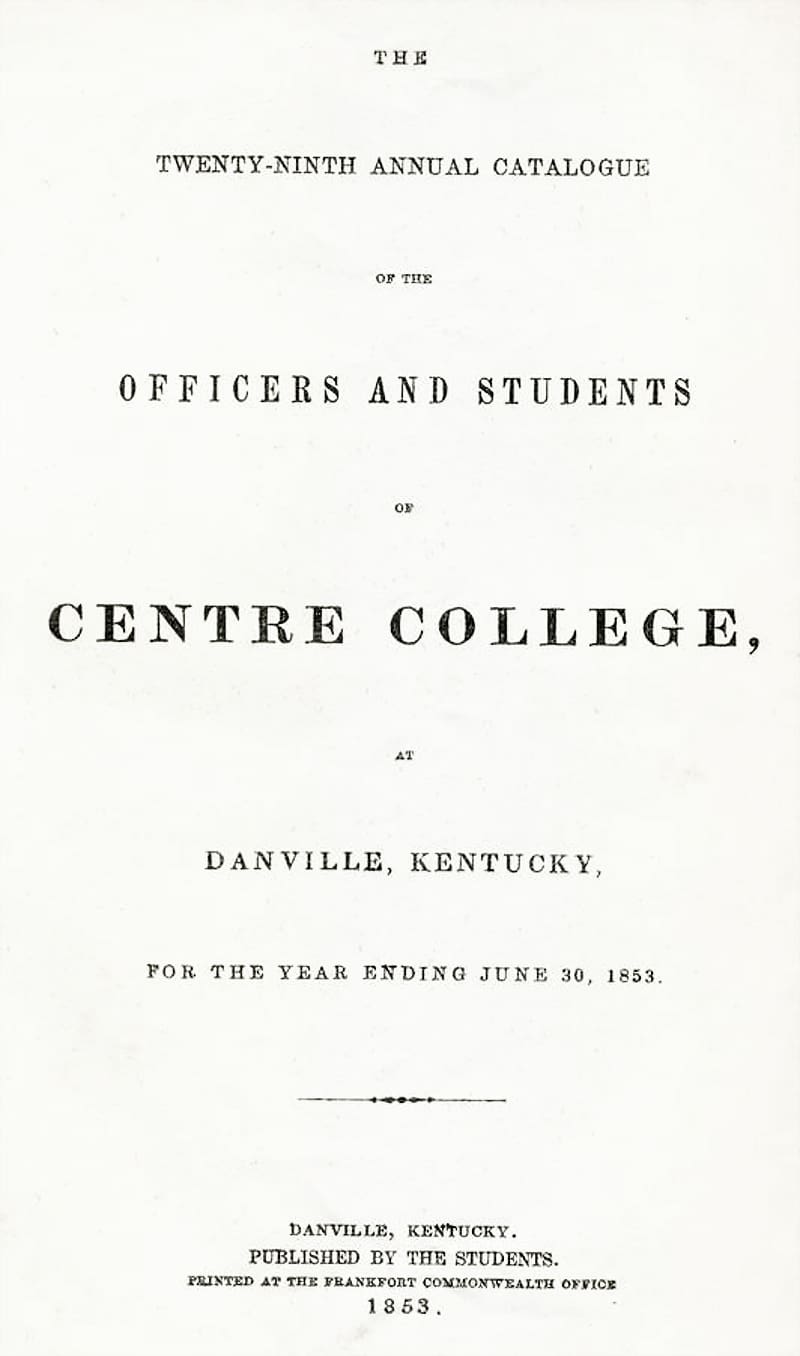
Directory for the end of 1853 as Centre was gaining a reputation for excellence
The latter part of the nineteenth and early twentieth centuries resulted in several new buildings. Old Centre, the original building dating from 1820, was still in use and continues so to this day. A classroom building, Old Main, was built in 1871. The President's home stood on the lawn next to Old Centre.

Old Centre

Old Main

The president's home from 1831 until 1937
A science building, Young Hall, named for two former presidents of Centre, was built in 1909.

Young Science Hall
A dormitory, Breckinridge Hall, originally constructed for the old Danville Theological Seminary in 1892, was named for Reverend Dr. Robert J. Breckinridge ( 1800-1871 ), an influential professor at the Seminary before the Civil War, who was the uncle of John Cabell Breckinridge, Centre, class of 1839, a United States Representative, Senator, and the Vice-President under James Buchanan. It was rebuilt after a fire in 1908.
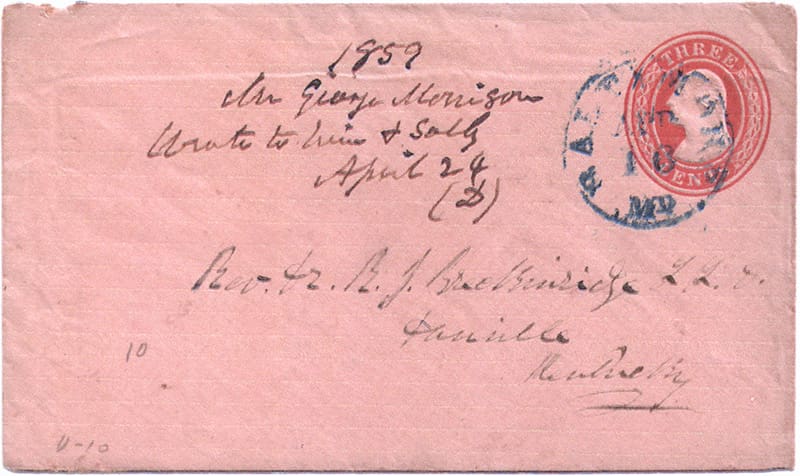
A letter addressed to Reverend Robert J. Breckinridge written in 1859, for whom Breckinridge Hall was later named

Breckinridge Hall
The Carnegie Library, built with a donation of $30,000 by Andrew Carnegie, was constructed in 1913, and there was a new gymnasium which replaced the original Boyle-Humphrey Gymnasium of 1892, paid for mainly by John Boyle, long-time Centre trustee, and Alexander P. Humphrey, class of 1866, and was given the same name of the original gym when it opened in 1915.

Carnegie Library

Boyle-Humphrey Gymnasium
Behind Young Hall and Old Main was a decently turfed football field with a modest wooden stadium.
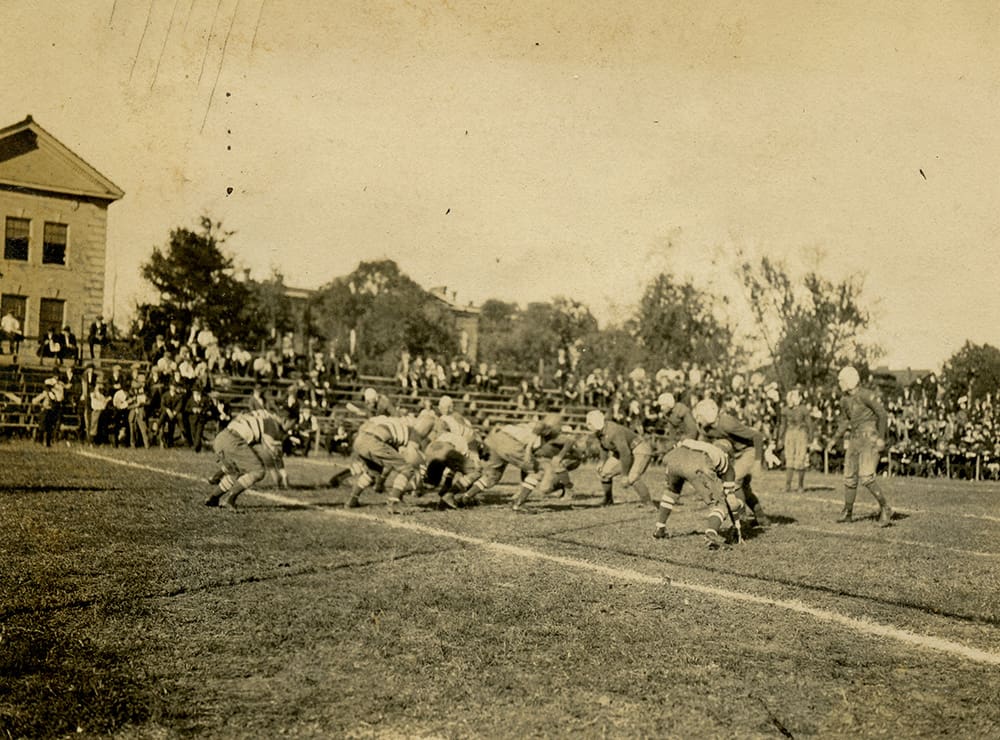
The wooden stadium, situated behind Young Hall on the left, and Old Main, in the distance, center. The Boyle-Humphrey Gymnasium is barely seen far to the right.
Two blocks down from the campus, on West Walnut Street, was the railroad station which was served by the Southern Railroad.
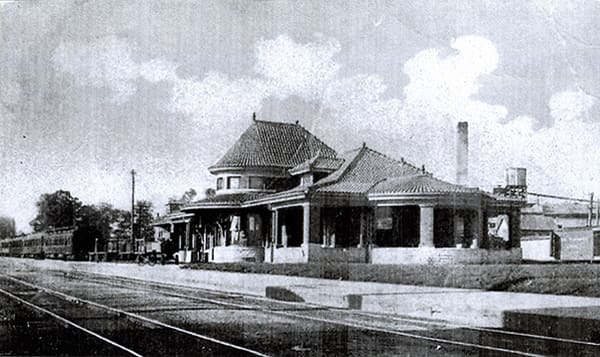
The Southern Railroad Station where many boisterous team departures and welcoming events took place during Centre's years of college football prominence
Across town, situated on beautiful, tree-lined Lexington Avenue, was a girl’s school named the Kentucky College for Women, founded in 1854. KCW was an independent college, becoming a department of Centre in 1926 with the 2 schools formally merging in 1930.

Kentucky College for Women on Lexington Avenue

A brochure produced by KCW

The girls in the spring on the lawn at KCW
The Lexington Avenue buildings were vacated in 1962 when the two campuses consolidated and the female students took up residence in new dormitories built on Centre’s property on West Main Street.
